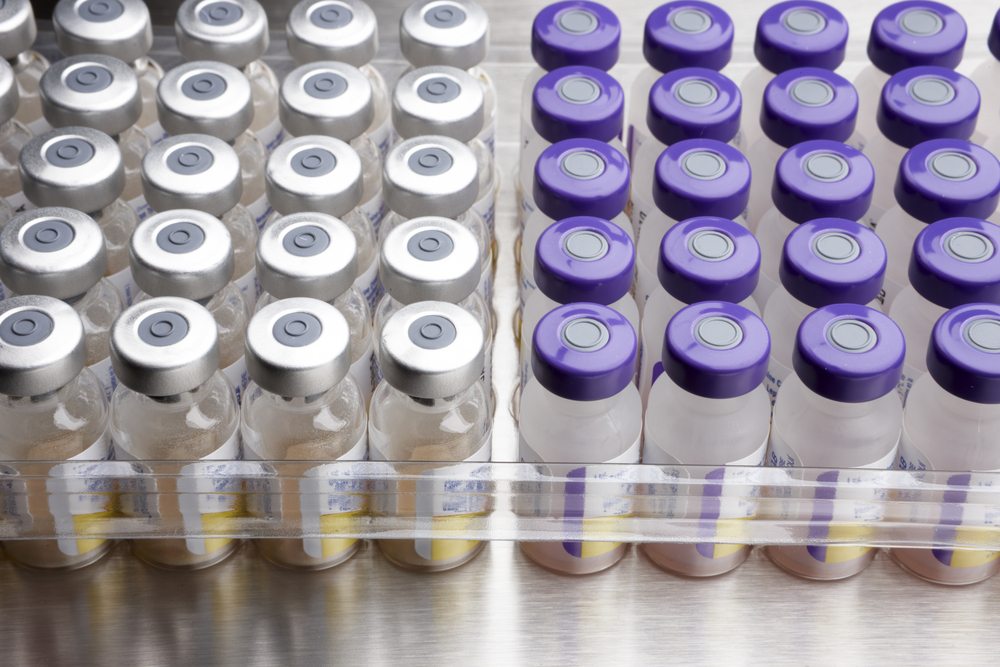Fabrazyme vs. Replagal for the Treatment of Fabry Disease

There currently is no cure for Fabry disease, but there are treatments available to help manage the symptoms of the disease. Two, Fabrazyme and Replagal, are very similar forms of treatment called enzyme replacement therapy (ERT). Sanofi Genzyme developed Fabrazyme; Shire, now owned by Takeda, developed Replagal.
How do the treatments work?
Mutations in the GLA gene cause Fabry disease. This gene contains the instructions necessary for the body to make the alpha-galactosidase A enzyme, which plays a role in the breakdown of a fat molecule called globotriaosylceramide (Gb3 or GL-3). When there is a mutation in the GLA gene, cells cannot produce enough functional alpha-galactosidase A enzymes. This results in a buildup of Gb3 in the body and leads to the symptoms of Fabry disease.
Both Fabrazyme and Replagal are intended to replace alpha-galactosidase A enzyme in order to breakdown Gb3 deposits in the body.
How are the treatments similar?
Both Fabrazyme and Replagal are recombinant enzymes (enzymes produced through genetic modification of industrial cell lines) that researchers designed to replace the alpha-galactosidase A enzyme in Fabry disease patients. Both therapies are intravenous (IV) infusions that patients receive once every two weeks. Clinicians deliver a solution containing the enzyme and other chemicals directly into the bloodstream over a period of time.
How are they different?
Fabrazyme and Replagal are both approved treatments for Fabry disease in Canada and Europe. However, the U.S. Food and Drug Administration (FDA) has approved only approved Fabrazyme. While both treatments are made using the same samples of human DNA containing the GLA gene, Fabrazyme is made in a Chinese hamster ovary (CHO) cell line commonly used for protein therapies, and Replagal is made in an undisclosed human cell line. The resulting enzymes are called agalsidase beta and agalsidase alfa, respectively.
The two treatments are both infusions that patients receive every other week. However, Fabrazyme is five times more concentrated — 1.0 mg/kg of body weight compared to 0.2 mg/kg body weight.
Studies comparing Fabrazyme and Replagal have shown that both treatments can delay some complications of the disease, but have not shown a difference between the two treatments in terms of clinical event rates. The studies did show a potential difference with Fabrazyme treatment causing more reduction in Gb3 in the blood than Replagal. Fabrazyme also may have a greater effect on the left ventricle of the heart than Replagal. These differences may be due to the difference in concentration between the two treatments. Fabrazyme also causes a greater response from the immune system than Replagal, which the authors of the study attributed to the use of CHO versus a human cell line.
Side effects
The most common side effects for both treatments are reactions related to the infusion itself, such as fever, chills, headache, nausea, fatigue, and pain and discomfort at the infusion site.
Last updated: Oct. 16, 2020
***
Fabry Disease News is strictly a news and information website about the disease. It does not provide medical advice, diagnosis or treatment. This content is not intended to be a substitute for professional medical advice, diagnosis, or treatment. Always seek the advice of your physician or other qualified health provider with any questions you may have regarding a medical condition. Never disregard professional medical advice or delay in seeking it because of something you have read on this website.






